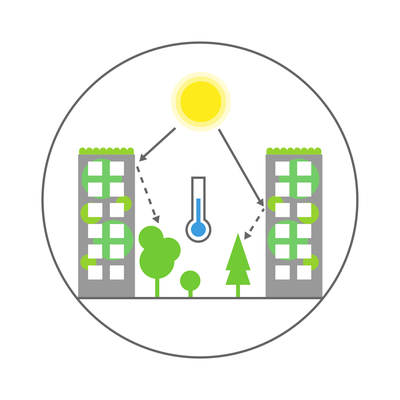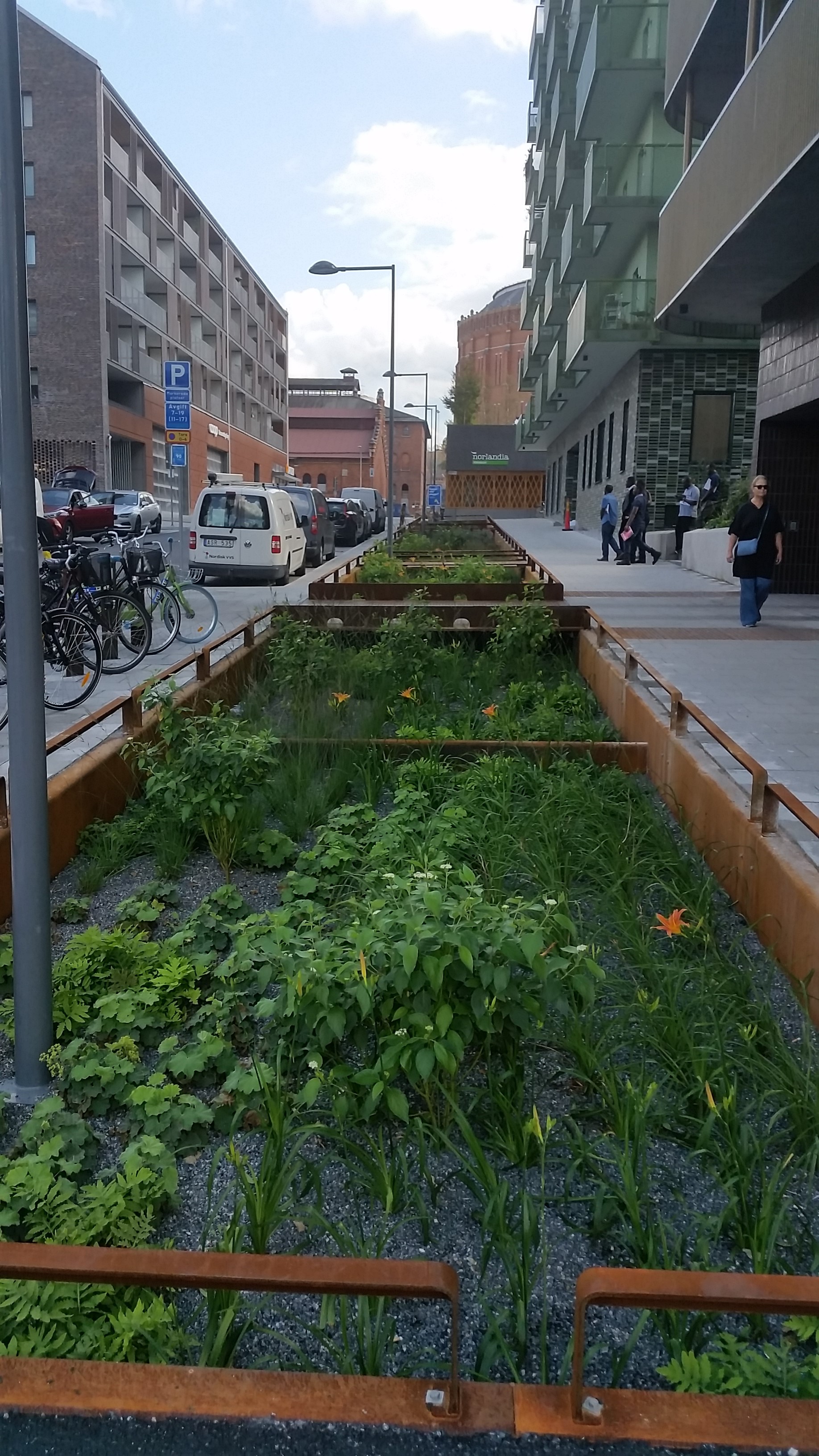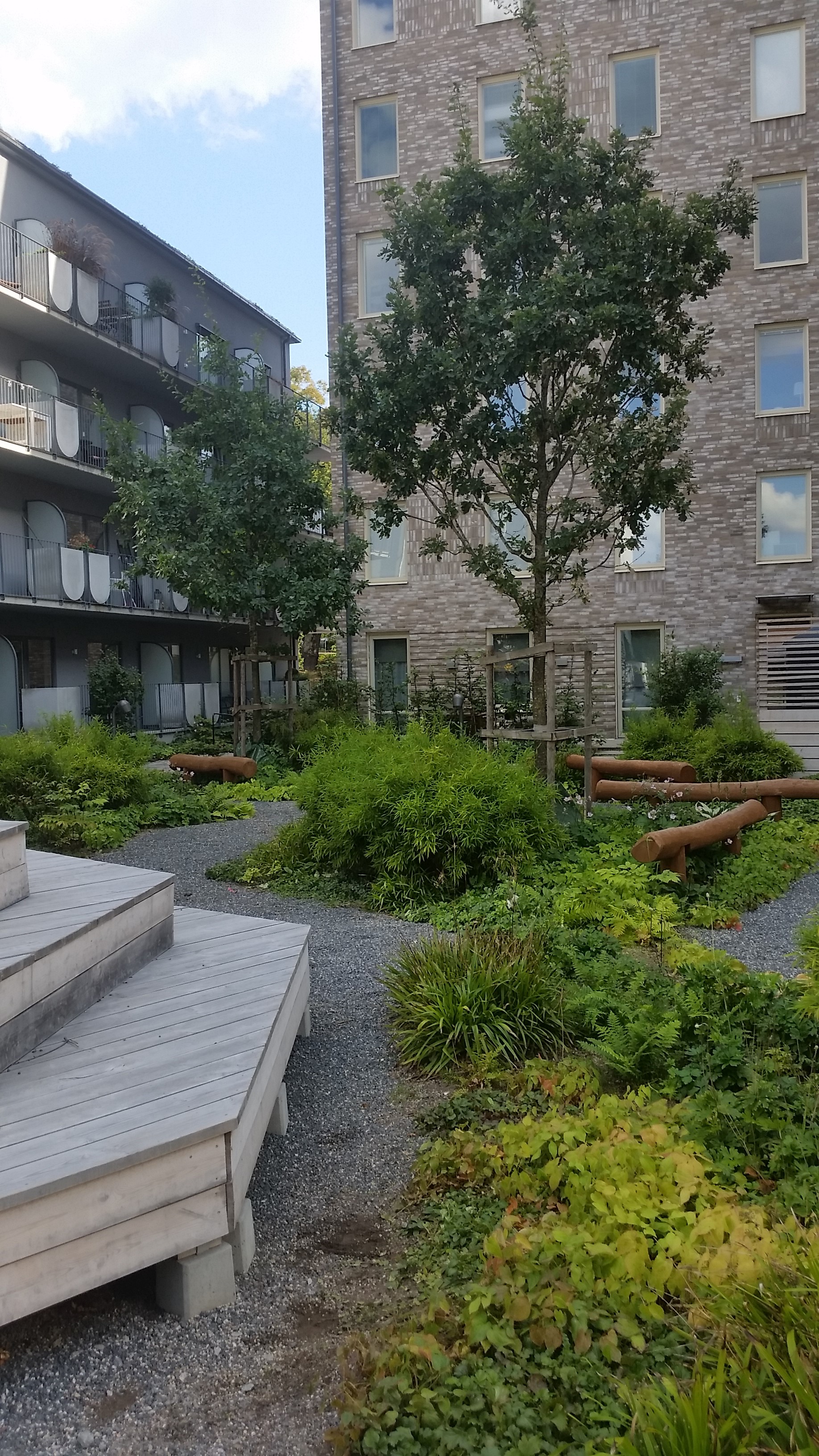Climate change adaptations in Nordic cities with green infrastructure
The densification of cities and ongoing climate change mean a greater need for adaptations to ensure that cities remain attractive. International agreements include stated ambitions to counter climate change and to adapt society in line with its effects. Urban green infrastructure and nature-based solutions can help to create healthier cities that are more sustainable in the long term.

Green infrastructure and physical planning measures can create cooling environments. UGI is therefore an important tool for healthier cities that are more sustainable in the long term.
Since nature-based solutions are a relatively new tool in climate change adaptation work, experience of the long-term effects is often lacking.
However, there is a wealth of knowledge and many good examples when it comes to urban green infrastructure (UGI).
The actions currently being taken in Nordic cities focus mainly on the need to solve surface water problems. There are fewer examples of cities using UGI as a climate change adaptation measure to tackle heatwaves.
The impact on wellbeing
Green spaces provide many relevant ecosystem services that have positive effects on our emotional and physical wellbeing, quality of sleep and perceived general health. A calm environment, the sounds of nature and close contact with animals and plants are just a few of the benefits that people look for when visiting green spaces near their homes.
The recommendations for reducing heat stress outdoors in Nordic cities suggest planting deciduous trees instead of evergreens. This is because deciduous trees provide shade in the summer while letting light through during the dark winter months.
The impact on air quality
Urban vegetation also affects air quality. Dry deposition on trees and plants leads to the uptake of air pollutants and lower levels. Vegetation can also reduce turbulence and the mixing of air on a street, which leads to higher levels.
A systematic review of scientific articles does not provide clear support for the suggestion that UGI is positive for the air environment in Nordic cities. On the contrary, many air pollutants – such as nitrogen dioxide and hydrocarbons – build up around or within clumps of trees instead. However, it appears to be more certain that coarser particles in particular (those with a diameter greater than 2.5 µm) are absorbed by plants. The effectiveness of this uptake differs between different varieties of plant.
The conclusions regarding the link between UGI and air pollutants in Nordic cities contradict previous international studies, and more data is needed in order to investigate this.
Continued research
More research is needed on the interactions between town planning, climate change, public health and wellbeing in Nordic cities. New knowledge is needed in order to make full use of the various ecosystem services provided by UGI, such as green roofs and walls, as a climate change adaptation measure. This would support better town planning, combining knowledge-based design of urban green spaces with informed choices of tree varieties.
Research project
The information on this page is gathered in the Heatwaves subproject within the HazardSupport research project (2015-2020).
Referenses
Persson G., Wikberger C., Amorim J.H., 2018. Klimatanpassa nordiska städer med grön infrastruktur External link., Klimatologi Nr 50. SMHI. ISSN: 1654-2258. 60 p.
External link., Klimatologi Nr 50. SMHI. ISSN: 1654-2258. 60 p.
Material from workshop (in Swedish): Att planera för värme i stadsmiljön i ett framtida klimat



